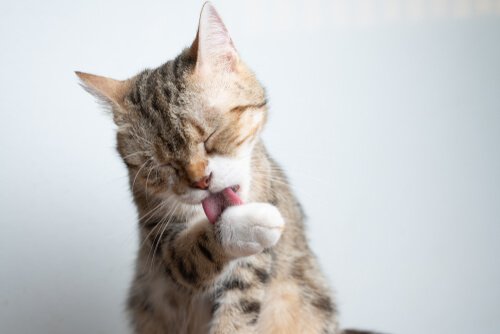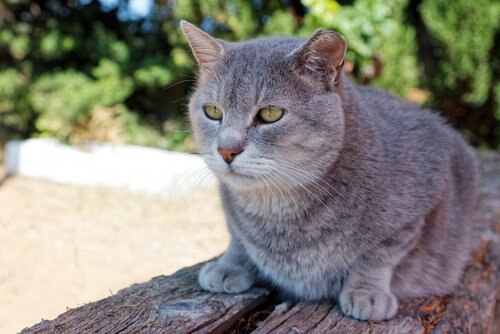Osteoarthritis in cats: symptoms and treatment
Although it is more common in older animals, osteoarthritis in cats can also appear in young specimens. This problem is caused by deterioration of the joints, just as happens with people. We inform you about it in this article.
What is osteoarthritis in cats
Osteoarthritis in cats occurs when the cartilages present in the joints deteriorate -por various reasons- and do not fulfill their function of cushioning movements. Therefore, the friction between the bones increases and this leads to pain and a reduction of mobility in the affected area.
Osteoarthritis is a chronic inflammation of the joints, but in many cases can be reversible . Although you do not believe it, 90% of domestic felines older than 12 suffer from it, but their owners do not detect it. There are three main causes of osteoarthritis in cats:
1. Genetics
Some breeds, such as Maine Coon, burnet, scottish fold and abyssinian, are more likely to suffer osteoarthritis in their hips or kneecaps.

2. Traumas
When a cat has had an accident, has been run over by a car, has fallen ill from a certain height - tree or roof of a house - or has fought with another animal it may suffer consequences that lead to it to the disease of osteoarthritis.
3. Overweight
Although obesity does not cause osteoarthritis in cats, what happens when the animal has extra kilos is that worsen symptoms and the picture becomes chronic.
4. Acromegaly
This disease is very rare in cats, but is related to osteoarthritis. It is a lesion in the pituitary gland that produces deformation in the joints.
>What are the symptoms of osteoarthritis in cats?
To detect that your cat has osteoarthritis you should pay close attention to some habit changes or signs of pain when making a specific movement:
1. Rigid limbs
This you can notice when the animal has spent several hours lying or lying on his bed or blanket and, when trying to sit up, it costs more than usual. It disappears after a few minutes, when the cat has walked slowly around the place.
2. Reduction of activities
It is true that elderly cats are less active than puppies, but they are still quite elastic and flexible . Therefore they can climb into bed, climb a tree and do some mischief.

But when a cat has osteoarthritis, little by little it reduces those activities, because it generates very strong pains . Some even prefer to lie down to avoid rigidity when wanting to get up.
3. Loss of muscle mass
Some cats with osteoarthritis eat less than usual and, if we add to that the lack of physical activity and games, it is normal that there is a reduction in the muscle mass of the extremities. If you see your pet thinner than usual, see the veterinarian.
4. Changes in behavior
Pain and stiffness are two things that cats can not control. That's why they become a little more aggressive and elusive than usual. They may not want to contact their owners and try to attack the smaller approach.
5.It may also indicate that consume drugs that promote the formation of cartilage, such as chondroitin sulfate and glucosamine.
Of course, we must take into account the dietary factor, since an obese cat is more prone to suffer osteoarthritis or that their symptoms get worse. Therefore, a feed according to their needs and adequate portions can improve the table a lot.


